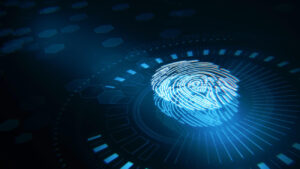Fingerprint recognition is a safe and valuable technology that has become common and widespread in smartphones and our everyday lives. But the recent spread of COVID-19 around the world makes people wonder how safe fingerprint authentication really is since touching the sensors could spread viruses.
Based on 20 years of seeing how fingerprint recognition technology and the market have changed, we would like to talk about what people think about the safety and usefulness of the technology.
How safe is fingerprint scanning?
In our daily lives, we are surrounded by many different kinds of surfaces that many people touch. Some examples of these surfaces are the poles in buses and trains, elevators, ATMs, copy machine buttons, door handles, handrails, tables, credit cards, and money.
In the wake of the COVID-19 outbreak, many news stories have said that these commonly touched surfaces could make you sick. Reports say that the virus can live on any surface from a few hours to a few days.
In order to use fingerprint recognition, users have to touch the sensor. A study found that the dirt on this surface is the same as on door handles. This means fingerprint recognition sensors can spread the virus through contact, just like any other surface people often touch. Yet another study suggests that cleaning sensor surfaces with alcohol could greatly reduce, if not completely eliminate, the chance of virus transmission.
Risks of using fingerprint recognition
The virus could spread from the nose or mouth of the carrier to the fingers. after that, fingerprint recognition sensors, then someone else’s fingers, and finally to their face (eyes, nose, or mouth).
The chance of spreading depends on the size of the surface touched and how long and hard it was touched. Fingerprint recognition sensors have a very small contact area, touch for less than one second, and use light pressure. So, the risk of getting a virus from them is much lower than from other surfaces, like door handles.
On top of that, fingerprint sensors can only be used by people who are known and allowed to use them. At the same time, other commonly touched surfaces, like commuting poles on public transportation, are touched by many different people.
But these people also share places and things like copy machines and tables in the meeting room. Because of this, a risk management system that is made for this kind of user group must be implemented. Some things that could be done are to check body temperatures when people come to work and to take turns working from home. Biometrics, like fingerprint recognition, can help stop the spread of viruses by letting only a small number of authorized people into public areas.
Final words
The spread of COVID-19 is putting at risk parts of our lives that we have grown used to. At the same time, it has given us too many reasons to be afraid and worried. Instead of letting fear take over, we can stop the spread of the virus by being clear about the safety level and risks of the technology and using it wisely.
The article has been published by the editorial board of the Identity Herald. For more
information please visit www.identityherald.com




